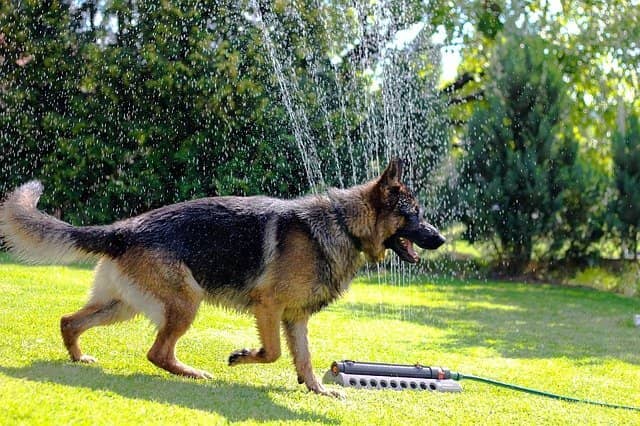Ancient inhabitants of the Teotihuacan Empire crossed canids for ritual purposes
Archaeozoological studies of the skeletons found in the Pyramid of the Moon and the Temple of Quetzalcoatl reveal that they practiced wolf-dog hybridization.

From archaeozoology studies applied to skeletons of canids found in burials of the Pyramid of the Moon and the Temple of Quetzalcoatl, in Teotihuacan, specialists determined that this ancient culture practiced the hybridization of wolf and dog, for the breeding of the wolfhound, an animal that was used in rituals and was associated with the Teotihuacan militia.
Wolves and dogs share 99.8 percent of genetic information, hence the crossbreeding of both animals practiced by the Teotihuacanos could be feasible and resulted in the wolfhound, a specimen that carried the divine blood of the wild canid, but in a manageable body.
From the identification of species of fauna remains found in the Pyramid of the Moon, and the studies made in previous years to other animal bones discovered in burials of the Temple of Quetzalcoatl, the presence of the wolfhound in the offerings has been determined. According to the investigations made, there are around 120 animal species identified, which were used for different purposes.
It was not only limited to the use of meat, skin, or bone, but they had a wide knowledge of animal biology, which was reflected in the manipulation of organisms, in practices such as captivity or perhaps even their domestication. Between 1988 and 1989, as part of the Temple of Quetzalcoatl Archaeological Project, a series of burials were discovered, among which number 4 stood out, which consisted of 18 individuals with their hands and feet tied, wearing the clothing of elite warriors.
One of the characters carried as part of his clothing nine jaws that were made by the Teotihuacans, from fragments of palates and dental pieces of several specimens, which at first were believed to be dogs. From dental and palate measurements, as well as dental shape, it was identified that eight of the jaws corresponded to wolf and dog hybrids or wolfhounds, three to dogs, two to coyote and wolfhound hybrids, and one to a mixture of coyote and dog.
The crossbreeding resulted in the wolfhound, an animal that was used in rituals and was associated with the Teotihuacan militia.
This identification, together with the analysis of several mural paintings from the Teotihuacan Archaeological Zone, led the research team to rethink the role played by the wolf in Teotihuacan culture, as a symbol of the militia. For many years, any Teotihuacan representation that had the form of a canid was interpreted as a coyote. Thus, in the articles on the iconography of this culture, made between 1960 and 2000, the interpretation of a form of canid was associated with the coyote.
Now there is archaeozoological information that shows that for every coyote skeleton discovered there are 20 wolves, which is leading us to rethink the interpretation of iconographic representations of canids. Of all the large predatory animals such as the jaguar, puma, wolf, coyote, and golden eagle, the only one that has a behavioral system that makes it suitable for manipulation by man is the puma, which can not only remain in captivity until adulthood but even reproduce.
In the case of the wolf, you can take a one-month-old cub and it can probably survive with humans until the juvenile stage because many of its behavioral patterns are like those of a dog, but after six months it seeks to become a leader within its group, and its temperament makes it a dangerous animal for humans. Wolves, jaguars, and eagles could hardly be kept for a few months in captivity until the date of the ritual event.
Faunal remains reveal evidence of the process in Teotihuacan
In the case of the wolves, complete juvenile pups have been found, but of adult specimens, only the heads and skins have been found; in the case of the pumas, complete skeletons have been discovered of specimens that were alive until the last day before the sacrifice, that allows us to think that perhaps they reached a more advanced level in the handling in captivity of the puma and perhaps their breeding was promoted with religious purposes.
In the excavations that were carried out in the Pyramid of the Moon, several burial offerings were found with remains of wolves of six months of age that were buried alive, the reason why it is inferred that they were captured being wolf cubs and they were kept in captivity during some months to be used at the moment of making the sacrifice.
The remains of pumas, jaguars, and eagles have also been identified, and in some cases -such as in Burial 6- several eagle and puma specimens had stomach contents. Analyzing the remains of that food, it was possible to verify that they were cooked rabbits, which indicates that they were not animals that had just been captured, but that they had been in captivity, fed by man until the moment they were sacrificed in the offering of the Pyramid of the Moon.
The Teotihuacan culture, like many other Mesoamerican cultures, saw large carnivores as symbols of strength, which were on par with the most powerful manifestations of nature, or linked them to the vital elements. They were also destined for the elites and therefore had a greater symbolic weight; birds of prey, wolves, coyotes, pumas, jaguars, and seashells were part of that select group of fauna, whose size also manifested power and strength.
Source: INAH




